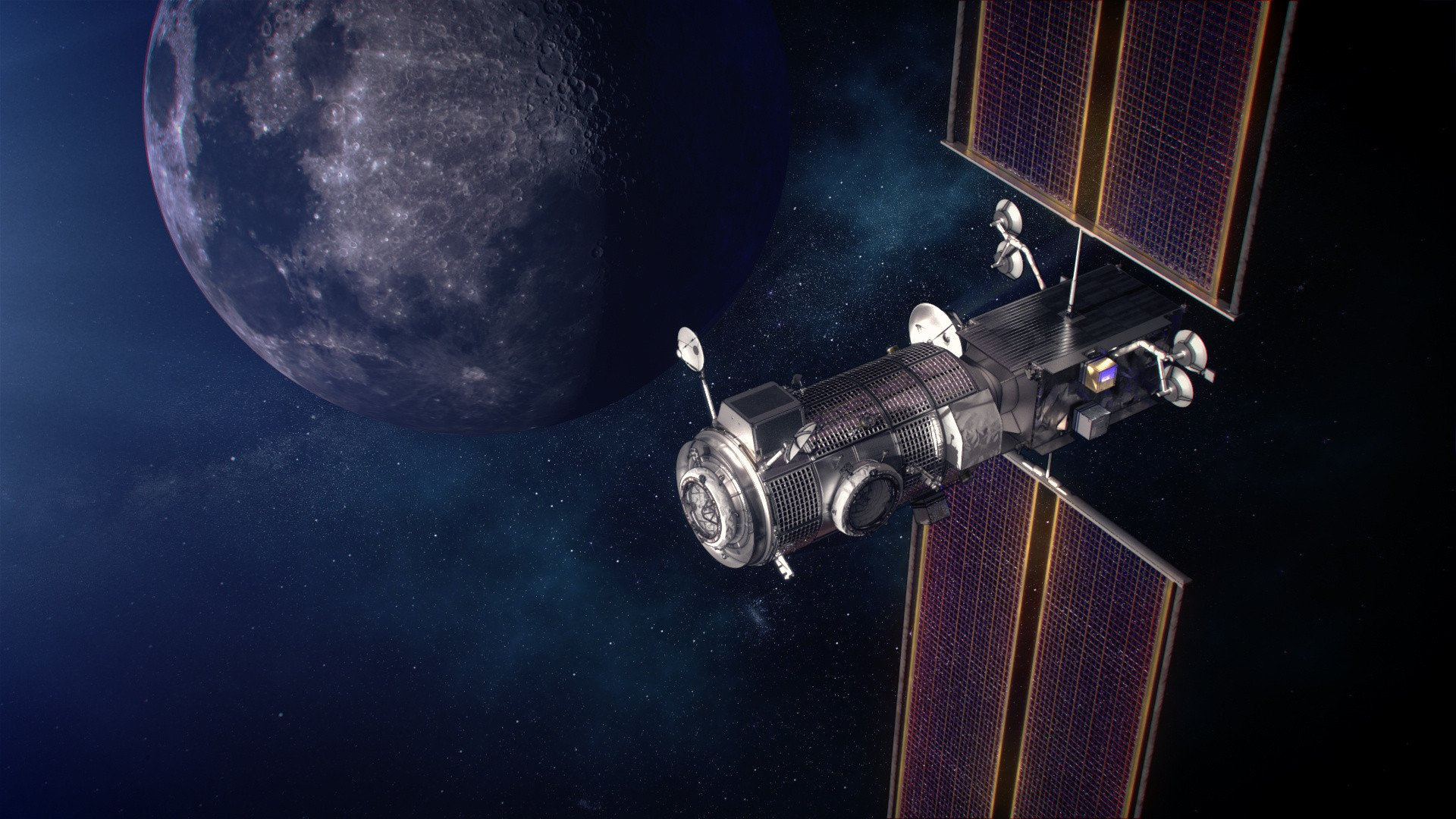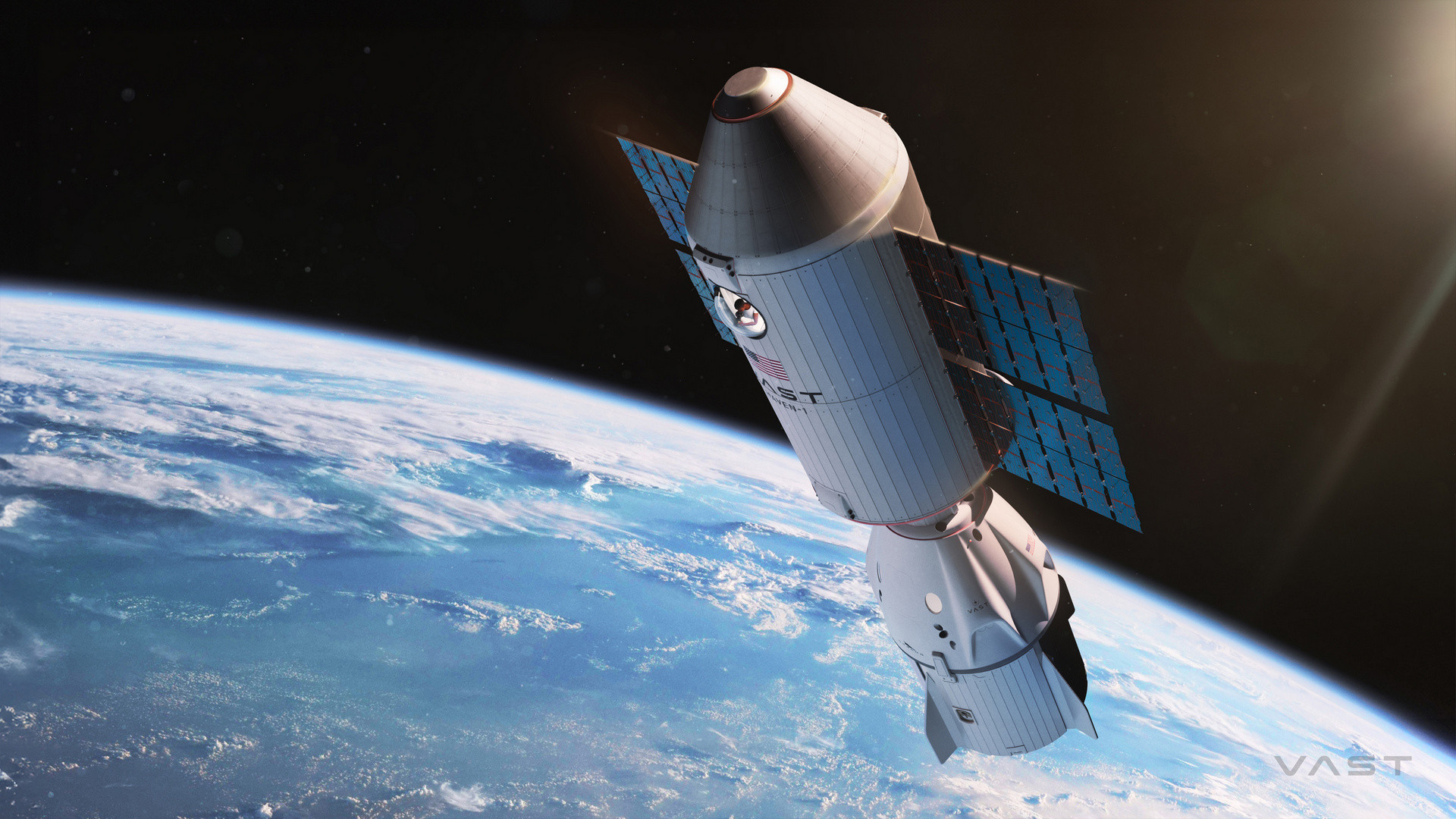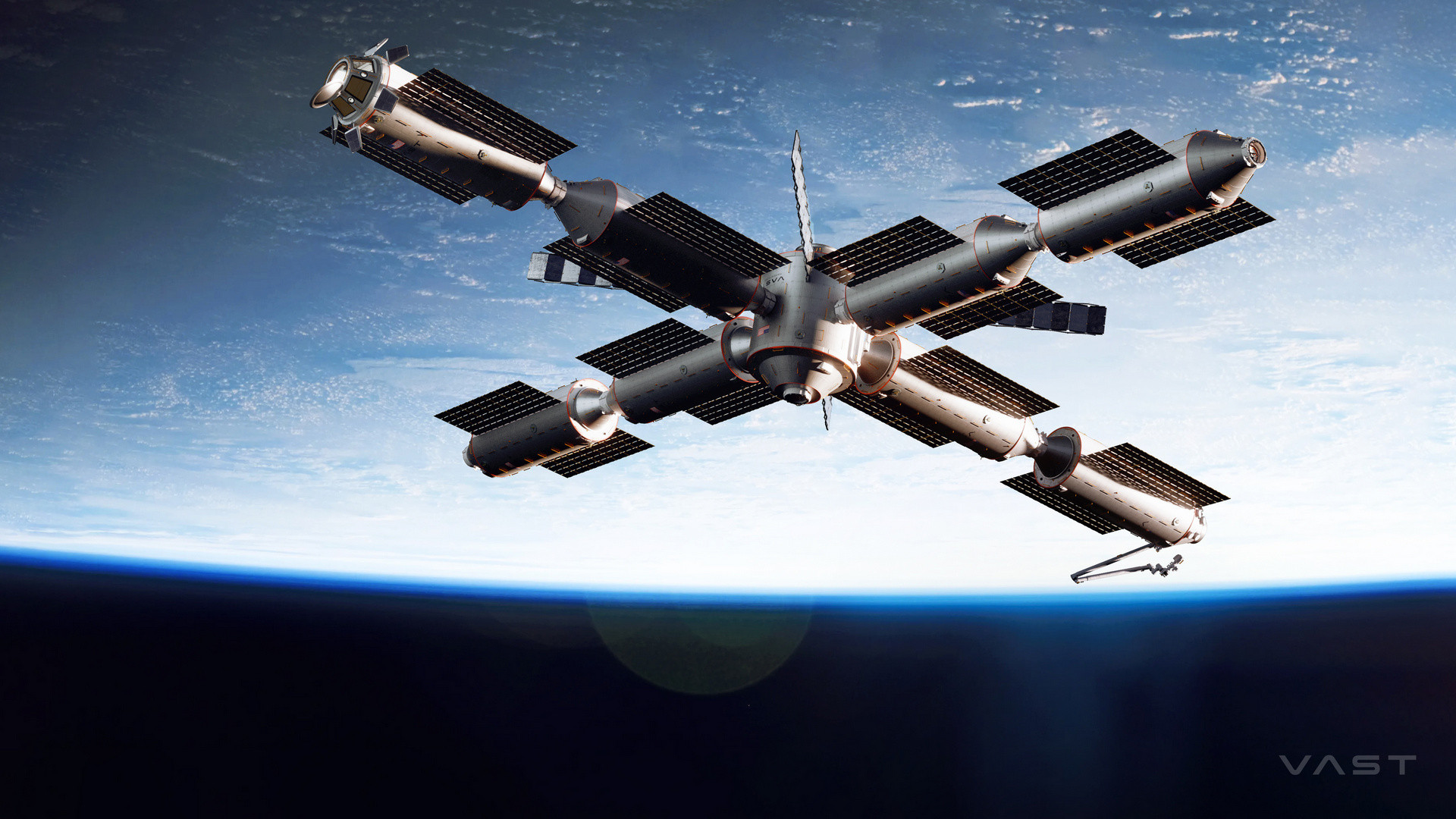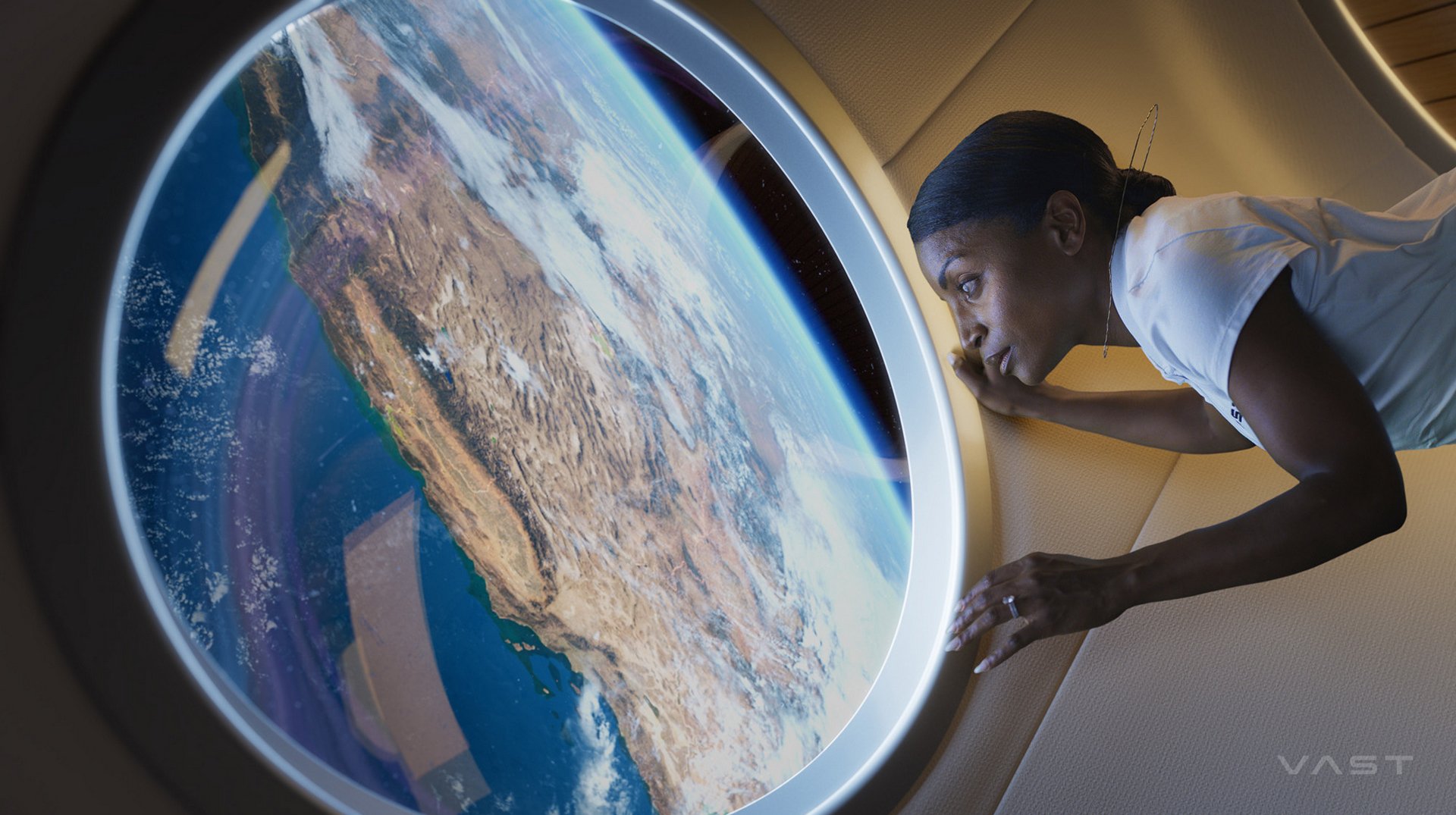“The “projections” of the Russian orbital servant station (Ross) and the moon orbital station (LOS) should not be considered-these are traditional Russian “Rospil” and “halfing”, with probability close to 100%, nothing of the promised will not begin in either 2027 or in 2029, in any other than 2029, in any other. So let’s look at the projects of other agencies.”, – WRITE: mezha.media
We have already written about the plans for the construction and operation of the Chinese space station Tiangong in the first part of this material.
The “projections” of the Russian orbital servant station (Ross) and the moon orbital station (LOS) should not be considered-these are traditional Russian “Rospil” and “halfing”, with probability close to 100%, nothing of the promised will not begin in either 2027 or in 2029, in any other than 2029, in any other. So let’s look at the projects of other agencies.
Lunar Gateway, US / EU / Canada / Japan / United Arab Emirates, 2027 NASA is not interested in the repeated experience of the ISS, so it gives the Earth space to private companies and stations, instead focusing on the Artemis monthly program. It is as part of Artemis that an intermediate surrounding Lunar Gateway space station should be built. This project involves the US, European Union, Japan, Canada, and the United Arab Emirates. That is, the same company that worked on the ISS, but the place of Russia was occupied by OAE. Lunar Gateway should be ready to accept Astronauts Astronauts Artemis IV, which is scheduled for September 2028, so they are already cut.
 Lunar Gateway Station is possible based on the latest NASA data, render, 2025
Lunar Gateway Station is possible based on the latest NASA data, render, 2025
Wikideas1
The Lunar Gateway structure is a typical modular station like “Mir”, but significantly smaller in size, because of the complexity of delivery of large modules to monthly orbit. The total tight volume of the station is only 125 m³that is, almost three times less than in peace, Skylab or Tiangong in modern configuration. The station is designed for the reception of four astronauts for 30 days, that is, only the crew of Artemis missions, two members of which will remain in orbit and two should go a month. No long -term or permanent stay in the monthly orbit.
Unlike the Earth stations, which are almost in circular orbits, Lunar Gateway will rotate on the so-called Near-Rectilinear Halo Orbit (almost straight linen halo-orbit) with 3000 km periselene and 70,000 km. One revolution around the moon takes 7 days.
The construction of Lunar Gateway should begin in 2027 after SpaceX Falcon Heavy rocket launcher will send two main stations modules to the lunar orbit-Power and Propulsion Element (PPE) and Habitation and Logistics. The following modules are planned to be delivered during the Artemis missions together with the Orion MPCV Monthly Ships and astronauts using SLS Block 1b rocket. That is, it is related to orion, so the modules themselves are small in size. A total of three or four similar flights in 2028, 2030, 2031 and possibly 2032.
 Power and Propulsion Element (PPE) and Habitation and Logistics Outpost (left) (left) in the orbit of the month, render, 2020
Power and Propulsion Element (PPE) and Habitation and Logistics Outpost (left) (left) in the orbit of the month, render, 2020
NASA
The main power module of the station, Power and Propulsion Element (PPE), based on the design of a space tugboat, proposed for the Mission to capture a small Asteroid Asteroid Redirect Mission asteroid, which was canceled NASA in 2018. The PPE has a weight of 5,000 kg, but half is fuel for engines. In addition to chemical engines, PPE will be equipped with electrostatic motors on the Hall effect, as well as solar panels with a performance of 60 kW. PPE projected and collected Maxar Technologies (yes, the same satellite images of which are used by our military). The module is already tested and collected, and a test deployment of solar panels has recently taken place.
The second module that will fly to the moon together with PPE, residential Habitation and Logistics Outpost (Halo), manufactures Franco-Italian Thales Alenia Space, and integration is taken over by Northrop Grumman. In the spring of 2025, the Ukrainian AN-124 reached this module to the United States.
 Antonov Antonov Airlines with Habitation and Logistics Outpost (Halo) at the Phoenix Mesi Airport (Arizona, USA), April 1 2025
Antonov Antonov Airlines with Habitation and Logistics Outpost (Halo) at the Phoenix Mesi Airport (Arizona, USA), April 1 2025
NASA/JOSH VALCARCEL
The design of Habitation and Logistics Outpost (Halo) is based on the design of the Enhanced Cygnus cargo ship from Northrop Grumman / Thales Alenia Space, which has been engaged in supplying supplies to the ISS for many years. Interestingly, Cygnus is based on the design of Multi-Purpose Logistics Module, which was placed in the Space Shuttle cargo compartment. A kind of continuity, minimalist design and cost savings, especially since the life support system for these ships/modules has already been tested. But yes, the residential module will be a little tight after the ISS.
For other modules. I-HAB-an additional housing module with an affordable volume of 10 m³ from Thales Alenia Space, which should deliver Artemis IV in September 2028. There will be four docking ports, a gateway, a toilet, a gym, a refrigerator, a control panels and more. European System Providing Refueling Infrastructure and Telecommunications (Esprit) from Thales Alenia Space with additional fuel tanks, docking ports and a small corridor with windows.
 Crew and Science Airlock Module Lunar Gateway Station, Render, 2023
Crew and Science Airlock Module Lunar Gateway Station, Render, 2023
NASA
The fourth module, Crew and Science Airlock Module, is a gateway to exit the open space, jointly develop Mohammed Bin Rashid Space Centre (UAE) and Thales Alenia Space. It should be delivered in March 2031 by the Mission of Artemis VI. The fate of another module, logistics Gateway Logistics Modules, which should be built by Canadian Space Agency, has not yet been resolved. If it is confirmed, the launch will take place in March 2032 as part of the Artemis VII mission.
The Lunar Gateway project has criticized a lot for waste of money, a strange choice of orbit, which poses astronauts for danger in the event of errors when planting per month, complications of artemis missions and more. After threats of Trump administration to reduce Na budget SA even rumors about the surveys of the project, but as part of One Big Beautify Bill Act, which was signed on July 4, 2025, Lunar Gateway received full funding.
Lunar Gateway should be a kind of bridge to start colonization of the moon and Mars. But the first long -term mission for the moon will only begin in 2035, if these terms do not move. Let’s see.
Bharatya Antaricksh Station, India, 2028 The Bharatya Antarikssh Station Space Station is part of the Indian Space Research Organization (Isro). Considering that the Indian program of creation of piloted ships of Gaganyaan is inhibiting, the date of implementation of this project is still theoretical.
The first non-pilot orbital flight of the Gaganyaan ship is scheduled for the end of 2025, and the first manned for 2027, as a rocket carrier will be used HLVM3. The Commander of the Future Mission, the Kapitan Shubhanshi Group, has already visited space within Axiom Mission 4 in June-July 2025.
 Bharatya Antaricksh Station, Render, 2024
Bharatya Antaricksh Station, Render, 2024
Nssdatta19
Bharatiya antaricksh Station is a modular station of five modules, one of which is central. The station will weigh 52 tonnes and a size of 27 × 20 m, ie it is twice less than Chinese tiangong in the current state. A sealed volume will be 265 m³residential – 105 m³. The station should take up to 6 gaganiatra (Indian astronauts) on two gaganyaan ships, a permanent expedition will be 2-4 people.
In September 2024, the program received funding. The first base module should be in space in 2028 thanks to HLVM3. The following launches are scheduled for 2030, 2032, 2033 and 2034. In 2031, the first short -term visit to the station should take place, in 2032 – a mission of medium duration and in 2033 a long -term mission. The second phase of expansion of the station was planned for 2035.
 Crew Module Atmospheric Re-Entry EXPERIMENT (CARE), one of the prototypes of the Gaganyaan ship’s descent, during landing in Bengal, 2014.
Crew Module Atmospheric Re-Entry EXPERIMENT (CARE), one of the prototypes of the Gaganyaan ship’s descent, during landing in Bengal, 2014.
Isro
In May 2025, ISRO and European Space Agency (ESA) signed a declaration of cooperation. ESA should assist ISRO with a training of gaganatri, random and docking operations, cargo ships. Bharatya antaricksh station is also possible to visit European astronauts.
Given that the money for this project has already been allocated, and India does not want to concede to anything in China, despite its initial stage, the Bharatya Antariksh Station’s project looks like a end.
We decided not to include Japanese Space Module from Jaxa and Mitsui & Co. Japanese Space Module from Japanese Space Module from Japanese Space Module from Japanese Space Module from Japanese Space Module from Japanese Space Module from Japanese Space Module from Japanese Space Module from Japanese Space Module from Japanese Space Module from Japanese Space Module Whether it is simply a module that is overwhelmed with one of the future commercial stations, whether a separate one -volume station/module is still unknown. Next, let’s look at commercial stations.
HAVEN-1, VAST (USA), 2026 The founder of Vast Aerospace Company Jed McCaleb wants to be the creator of the world’s first commercial space station in the world. Therefore, HAVEN-1 already has a precise starting date-May 2026 (Missile-Falcon 9 Block 5) and even the date of launch of the first mission of Vast-1-June 2026 (Visit ship-SpaceX Crew Dragon). The duration of the mission is up to 30 days. By the way, Jed McCaleb began to develop software, such as the Utilities for Peer-To-PEER exchange of Edonkey2000 files.
 Space Station Haven-1 and SpaceX Crew Dragon, Render, 2024
Space Station Haven-1 and SpaceX Crew Dragon, Render, 2024
Vast
HAVEN-1 is a single-volume station that is unable to maintain its functionality for a long time, relying on this on a ship of visit and supply.
The HAVEN-1 project is striking in the design interior without unnecessary details, which would more come with some expensive hotel, separate small crew cabins and a huge viewing dome with a diameter of 1.1 m. And also by the fact that all additional compartments, service and laboratory equipment are hidden.
 HAVEN-1 station in section, infographic, 2024
HAVEN-1 station in section, infographic, 2024
Vast
HAVEN-1 has a weight of 14 600 kg, a sealed volume of 80 m³residential 45 m³. The solar panels should produce 13.2 kW, life support is supported by the SpaceX Crew Dragon ship. The station is designed for staying 4 people within 14-30 days. In general, the HAVEN-1 life cycle has been designed for 4 missions for 3 years.
Despite the fact that the station looks like a space hotel for tourists, it will have scientific equipment and the ability to experiment. For example, an experiment on imitation of lunar gravity is planned.
 Land Testing Model Station Haven-1, 2024
Land Testing Model Station Haven-1, 2024
Vast
Although VAST was founded only in 2021, it has its own production capacity, has already acquired the developer of Launcher missile engines, has concluded a contract with SpaceX not only on the delivery of crews, but for use at the future SpaceX Starlink laser communication station. Moreover, the company already has a project of the modular station of Haven-2, with which it plans to participate in the NASA Commercial Leo Destinations.
Vast regularly reports on the progress of HAVEN-1 development and individual station systems. By the end of 2025, the company must launch the Haven Demo mission, a satellite that will check the operation of some systems and software of the future station.
And although the whole history of Vast is very similar to a fairy tale, and the exposed time looks unrealistic, let’s see how it will be, because this project is the impression of viable.
Life Pathfinder, Sierra Space (USA), 2026 Life Pathfinder is a test version of the inflatable module Large Integrated Flexible Environment (Life) from Sierra Space, which should act as a one -volume station and prove the viability of technology that will be used to create a much larger ORBal Station.
 Life module prototype on Sierra Space test site, September 2024
Life module prototype on Sierra Space test site, September 2024
Sierra Space
Inflatable orbital modules have started to develop Biglow Aerospace, two of its test platforms by Genesis I and Genesis II are still in orbit, and the Bigelow Expandable Activity Module (Beam) module has been attached to ICS since 2017. Sierra Space has picked up this concept proposed by NASA in the 1990s.
Life Pathfinder will have a sealed volume of 285 m3, the launch of the module is scheduled for 2026. But let us remind you that Sierra Space is well known for the transfer of launch dates. The Dream Chaser’s cargo rod from this company, announced in 2004, had a long time to go into space, and in fact, as of now, its engines and software have not yet been certified by NASA.
On the other hand, it cannot be said that Sierra Space does not work on this project. In January 2024 Life passed testing I am a full -scale excess with excess pressure, by 27% exceeding the recommended NASA level. In April 2025, the module material was tested that mimic collisions with high -speed meteorite. So the work is moving, but even the end of 2026 looks like a very optimistic date of launching Life Pathfinder.
Starmax, Gravitics (USA), 2026 The Starmax project from Gravitics is a real gigantomania. Gravitics offers a separate module with a volume of 400 m³it’s almost half of the ISS sealed volume! The design of Starmax is very reminiscent of the old good Skylab, but Gravitics does not process old rockets, but makes modules from scratch, although yes, they are also similar to huge fuel tanks.
 Starmax station in land orbit, render, 2025
Starmax station in land orbit, render, 2025
Gravitics
Unlike many other projects and modern stations, Starmax does not perform parts that perform. It is an almost perfect cylinder with a docking unit at one end, and a dome for observations in another. Solar panels (8 kW), radiators and orientation and correction engines are located on its surface, just as in the drawings of fiction artists of the 1960s. The inner space is divided into several conditional “floors” as in Skylab. The station is applied to two rows of large portholes.
Gravitics is only 4 years old and their project also looks too ambitious. But the company has already concluded a contract with Axiom Space on the construction of modules for the future Axiom Station station, as well as received funding from US Space Force, to develop orbital medium of small maneuver satellites (possibly interceptors) in the framework of the Strategic Funding initiative. So it is not a scam, but again, 2026 is too optimistic.
Axiom Station, Axiom Space (USA), 2027 But Axiom Space is relatively old (9 years old) and has an astronaut and former NASA Administrator Charles Bolden (4 space flights) and astronauts Peggie Witon (5 flights, 695 days in space), Michael of Lopez (4) Vakata Coiti (5 flights, 504 days in space).
Axiom Space has been engaged in space tourism and has been carrying visitors to the ISS since 2022. Four Axiom missions have already taken place, and the latter was taught by the already mentioned Indian astronaut Shubhanshus. Axiom Mission 5 is scheduled for May 2026.
 Axiom Station in orbit, Render, 2024
Axiom Station in orbit, Render, 2024
Axiom Space
The ISS is, of course, it is already surviving, so Axiom Space wants to have its own station and pass modules to tourists, or space agencies and private companies for research in microgravitation.
Axiom Space wants to launch the first own module, Payload Power Thermal Module (AXPPTM), analogue of the basic module “Mir” and the ICS, already in 2027, and attach it to the International Space Station. Initially, it was planned to launch a Habitat 1 residential module (AXH1), but because of the plans of the ISS, Axiom decided to start with the main module to be able to retreat in 2028 and move on to an autonomous flight.
 Modules and sequence of assembly of Axiom Station Station, Infographics, December 2024
Modules and sequence of assembly of Axiom Station Station, Infographics, December 2024
Axiom Space
In general, Axiom Station will have five modules – the main Power Thermal Module (AXPPTM), residential HABITAT 1 (Axh1), Axal Gatellum module, second residential habitat 2 (Axh2), and finally scientific research Observatory.
The main structure of AXPPTM is made by Franco-Italian Thales Alenia Space in Turin (Italy) and in the fall of 2025 it should get to the Axiom Space plant in Houston (Texas, USA) to integrate systems and internal structures. Axh1 and AXH2 modules are created by Thales Alenia Space, but as you could read above, Gravitics can also work on other modules.
 Collection of the external structure of the module Axiom Habitat 1 (Axh1) at Thales Alenia Space plant in Turin (Italy), July 2023
Collection of the external structure of the module Axiom Habitat 1 (Axh1) at Thales Alenia Space plant in Turin (Italy), July 2023
Axiom Space
The first Axiom Station module will fly into space in 2027 (the launch vehicle is not yet defined), the second in 2028, subsequently. The total sealed volume of the station in the assembled form in the early 2030s should be striking 670 m³2/3 of the ISS volume.
The Axiom Station modules are already gathering, Axiom Space is working on other tasks, and in general this project of a commercial private space station looks the most realistic of all mentioned in the article.
Orbital Reef, Blue Origin (USA), Sierra Space (USA), 2027 Orbital Reef is a joint project of Blue Origin and Sierra Space and the next after testing Life Pathfinder step for inflatable Life modules.
The main contribution of Blue Origin to this project is a new multiple heavy New Glenn rocket launcher, which, we remind, only once, only once, in January 2025, and that was not possible to return the accelerator to Blue Origin. Plus Amazon logistics and Amazon Web Services. Sierra Space should provide inflatable LIFE modules of various configurations and cargo, and later, perhaps, Dream Chaser passenger space boat, which again reminded that he never flew into space. Other partners include Mitsubishi Heavy Industries, Boeing (Starliner ships, who are also in question), Redwire Space and Genesis Engineering Solutions.
 ORBITAL REEF station in orbit in full configuration, render, 2022
ORBITAL REEF station in orbit in full configuration, render, 2022
Blue Origin
The first Orbital Reef Configuration should include the base module, the LIFE module and the scientific module, and further Life modules may be piled. The planned tight volume of the station is fantastic 830 m³crew – 10 people. Sierra Space describes the station as a “business park in space”, with the ability to shoot individual modules for research, tourism, etc.
 DREAM CHASER shuttle is stuck to Orbital Reef Station, Render, 2023
DREAM CHASER shuttle is stuck to Orbital Reef Station, Render, 2023
Sierra Space
It seems that a very powerful team with high -quality and promising technologies, but more questions about this project are more than answers, all its components are in a suspended state. It is rumored that in fact the partnership between Blue Origin and Sierra Space has already stopped, each of the companies is busy with their own projects.
Starlab, Nanoracks (USA) / Voyager Space (USA) / Northrop Grumman (USA) / Airbus Defense and Space (EU) / MDA Space (Canada) / Mitsubishi Corporation (Japan), 2028 The StarLab station was funded by NASA as part of the Commercial Leo Destinations, and ESA. The main contractors here are Voyager Space (USA) and Airbus (EU). Northrop Grumman (USA) joined later by throwing his own project, and wants to offer his truck Cygnus as a ship supply ship.
 Starlab station in orbit, render, 2024
Starlab station in orbit, render, 2024
Starlab
Although on Starlab renders and looks like a whole, it is actually made up of two modules – small base (left, similar to a Gemini capsule) and a large residential, diameter 8 m. The station will have a sealed volume of 450 m³crew – 4 people. SpaceX Starship is selected through the large module diameter. The residential part of the station will decorate Hilton, yes, the same.
In fact, as of now, StarLab is the only living project under the Commercial Leo Destinations. It undergoes a variety of NASA certification stages at the level of design, documentation and procedures, but the modules have not yet come. Although given the list of participants, Starlab chances of implementing are quite high.
HAVEN-2, VAST (USA), 2028 The next HAVEN-1 project is VAST, the implementation of which will depend on the success of the first station. Haven-2 will be modular and the beginning of its construction is scheduled for 2028, when the first module, similar to the enlarged Haven-1 module, will be launched.
The length of the standard hawen-2 module is 16 m versus 10 m in HAVEN-1, weight-29,000 kg against 14 600 kg, tight volume-125 m³ against 80 m³. Therefore, the rocket launcher is already SpaceX Falcon Heavy.
 Linear Configuration Haven-2 with four modules, render, 2024
Linear Configuration Haven-2 with four modules, render, 2024
Vast
Each of the modules has joint ports on both sides, so by 2030 it is planned to assemble a kind of attraction of four sequentially connected modules. Later, the Haven Core central module will be added to them, and the station will change the configuration to a more familiar one. The maximum nine-module configuration of HAVEN-2 with a residential volume of 500 m³ vast plans to reach in 2032.
But so far these are just plans. It is worth waiting for the start and operation of HAVEN-1 before dreaming of Haven-2. Although something, but they can dream in vast. Because they already have a project of the next station-a conditional HAVEN-3, which will rotate around the central axis to create artificial gravity. This project with an incredible sealed volume of 2160 m³ is “planned” for 2035. And this is already a real fantasy.
 Full Configuration Haven-2, Render, 2024
Full Configuration Haven-2, Render, 2024
Vast
As you can see, there are enough space stations that should be replaced by the ISS. The only question is which of them will survive for implementation. Personally, I would put on HAVEN-1 of Vast, Axiom Station from Axiom Space and Starlab from Voyager Space / Airbus. As for the Lunar Gateway, NASA, ESA and other space agencies, I, along with other critics, do not understand why it is needed at all.
